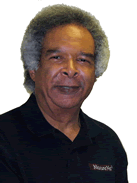Wood's Corner - To Queue Or Not To Queue

Efficient Use of a Shared MeasureNet Spectrometer
MeasureNet Spectrum Quarterly; July, 2006
I was talking with Michael Kurutz at the spring ACS conference, and he mentioned that he was not sure that all of our users are aware of how to minimize queues from forming when using the MeasureNet spectrometer in their laboratories. We decided that this would be a useful topic to discuss in this column. Since I am not personally involved in the teaching labs, I wanted someone with experience to describe how they use the MeasureNet shared spectrometer in their lab. So, I asked colleague and friend Professor Estel Sprague (of the Department of Chemistry at the University of Cincinnati) if he would tell us how he avoids student pileups at the spectrometer in his labs. Below is what Estel had to say...
Spectroscopy? – Get In Line!
That is exactly what we don’t want to hear when we use spectroscopy in the lab. We want our students to be productively engaged, not wasting their time standing in line waiting for the spectrometer to be free. The MeasureNet networked spectrometer was carefully designed to hold such queuing-up for use to a minimum. The result is a radical departure from the traditional approach to spectroscopic measurements in the teaching lab.
Imagine yourself using a typical stand-alone spectrometer, probably attached to a PC. You first prepare the device to record a spectrum, then make the actual measurements, and finally examine the results, probably saving and/or printing them. Throughout this process, you are monopolizing the spectrometer, hence, it cannot be used by anyone else. The approach used for the MeasureNet networked spectrometer involves separating out the actual data collection step from everything else. Setting up prior to measurement and subsequent data examination, saving, printing, etc., are carried out at individual workstations, NOT at the spectrometer. The students are at the spectrometer only long enough to make the actual measurements, typically a minute or so, and the spectrometer is then free for the next user. Used in this manor the MeasureNet network, with its controller, twelve workstations, and one networked spectrometer, effectively functions as anywhere from one to twelve independent, stand-alone spectrometers.
There are situations, however, in which queuing may be an issue unless you take steps as the instructor to prevent it. This is probably best illustrated by means of a real example: the determination of the pKa of an indicator from a series of absorption spectra. This experiment requires the preparation of seven buffer solutions, using the MeasureNet workstation as a pH meter. Each of these buffer solutions is used to prepare a solution containing an indicator, with the indicator concentration kept the same in all seven sample solutions. The absorption spectrum is recorded for each solution, and these are subsequently analyzed to yield the pKa value for the indicator.
If you or I carried out this experiment, we would naturally try to be efficient by first preparing all seven buffers, then preparing all seven solutions containing the indicator, and finally measuring all seven absorption spectra. If we were alone in the lab, this would be perfectly okay or even desirable. On the other hand, this is NOT the best way for our students to proceed, since no one would be using the spectrometer during the first two-thirds of the lab period, and everyone would be trying to use it near the end resulting in queues and difficulty getting the measurements finished in time. You, as the instructor, can avoid this by requiring the students to alter this natural procedure somewhat. After preparing the seven buffers, the students should take just one of them and prepare the first sample solution with indicator. The spectrum of this solution should be recorded, examined at the station, and saved, probably on MeasureNet’s remote data storage server. Only then should the second sample solution be prepared and have its spectrum recorded, and this sequence should be followed for the remaining samples. This modified procedure spreads out the use of the spectrometer over a much greater portion of the lab period and substantially reduces the likelihood and extent of queuing.
Spectroscopic methods occur throughout modern chemistry, so it is important to provide as much meaningful exposure as possible for our students. Using the MeasureNet networked spectrometer, with a little attention to procedural details, is an efficient and effective way to incorporate modern spectroscopic experiments into our teaching labs.
I want to thank Estel for taking time to share this information with us.
If you have a question about using any of the MeasureNet instrumentation, please contact me!
See you at the BCCE,

Elwood Brooks, Ph.D. is a MeasureNet Senior Applications Specialist and secretly moonlights as a Harley Tech. He can be reached at brooks@measurenet-tech.com